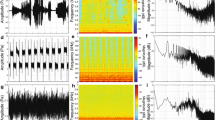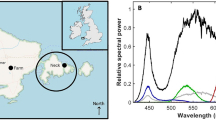Abstract
This study describes how individual whitefish Coregonus lavaretusreact to strobe light. Field experiments were performed in a net enclosure on fish tagged with ultrasonic transmitters. A strobe light array was switched on near the tagged fish. The fish moved away from the light and increased their swimming speed. Aquarium experiments under controlled conditions were carried out in rearing tanks at Saimaa Fisheries and Aquaculture Station in Finland. A strobe light was directed from the side of the basin just ahead of, directly at, and behind the fish at a close range. In the first two cases fish responded by a distinct turn and a change in swimming direction away from the light. The fish did not change its swimming direction when light was aimed from behind. It is concluded that strobe light may be used to prevent fish from swimming into a specific area. Implications for development of new fishing equipment and research concerning fishes in areas with water power stations is briefly discussed.
Similar content being viewed by others
References
Blaxter, J. H. S. & R. S. Batty, 1987. Comparisons of herring behaviour in the light and dark: changes in activity and responses to sound. J. mar. biol. Ass. U.K. 67: 849-860.
Fowler, J., L. Cohen & P. Jarvis, 1998. Practical Statistics for Field Biology, 2. Wiley & sons, New York: 255 pp.
Hoar, W. S., M. H. A. Keenleyside & R. G. Goodall, 1957. Reactions of juvenile Pacific salmon to light. J. Fish. Res. Bd. Can. 14: 815-830.
Hocutt, C. H., 1980. Behavior barriers and guidance systems. Power Plants: Effects on Fish and Shellfish Behavior. Academic Press, NewYork: 183-205.
McIninch, S. P. & C. H. Hocutt, 1987. Effects of turbidity on estuarine fish response to strobe lights. J. App. Ichtyol. 3: 97-105.
Patrick, H. P. & A. E. Christie, 1985. Responses of fish to strobelight/air-bubble barrier. Fish. Res. 3: 157-172.
Popper, N. A. & J. T. Carlson, 1998. Application of sound and other stimuli to control fish behavior. Trans. am. Fish. Soc. 127: 673-707.
Ruggles, C. P., 1993. What's new in downstream fish passage? In Salmon in the Sea. And New Enhancement Strategies. Blackwell Scientific Publications Ltd, Fishing News Books, Cambridge, MA.
Sager, D. R., C. H. Hocutt & J. R. Stauffer, 1987. Estuarine fish responses to strobe light, bubble curtains and strobe light/bubblecurtain combinations as influenced by water flow rate and flash frequencies. Fish. Res. 5: 383-399.
Solovev, Y., 1971. Results of experimental fishing of commercial items at light in the Atlantic. Fish Beh. Fish. Tech.: 91-95.
Wickham, A. D., 1973. Attracting and Controlling Coastal Pelagic Fish with Nightlights. Trans. am. Fish. Soc. 4: 816-825.
Yami, M. B., 1988. Attracting fish with light. FAO training services 14: 0-72.
Author information
Authors and Affiliations
Rights and permissions
About this article
Cite this article
Königson, S., Fjälling, A. & Lunneryd, SG. Reactions in individual fish to strobe light. Field and aquarium experiments performed on whitefish (Coregonus lavaretus). Hydrobiologia 483, 39–44 (2002). https://doi.org/10.1023/A:1021342520542
Issue Date:
DOI: https://doi.org/10.1023/A:1021342520542




